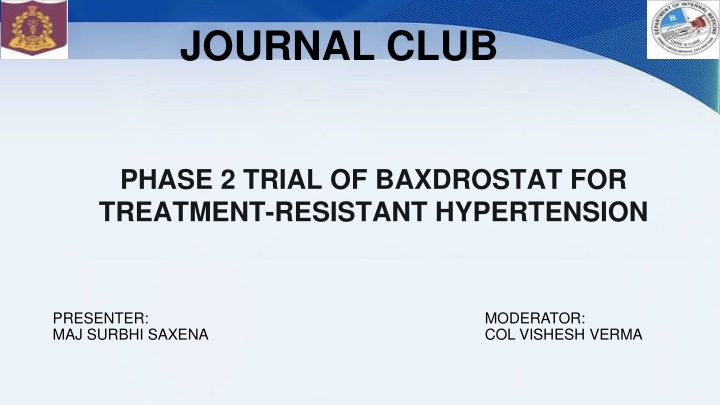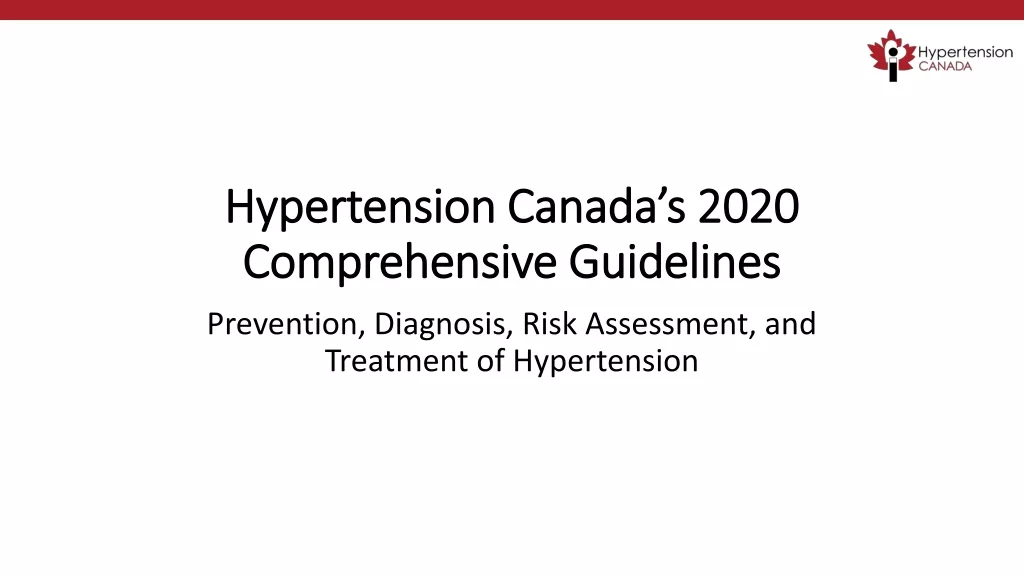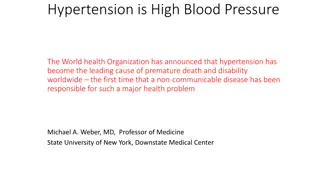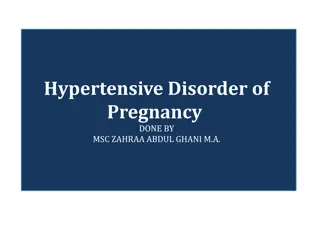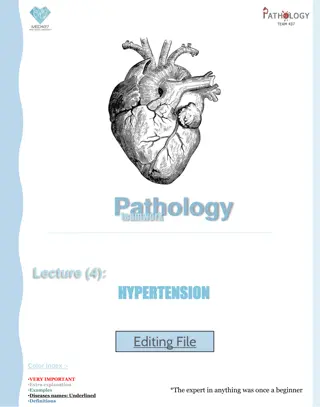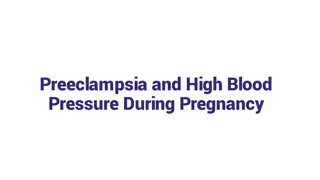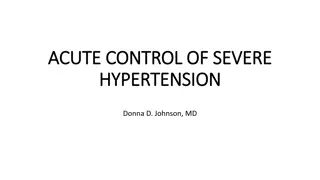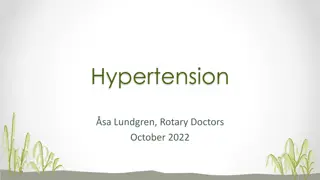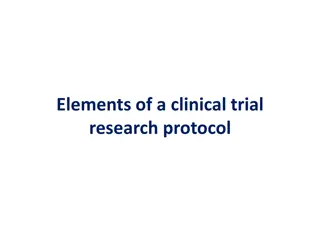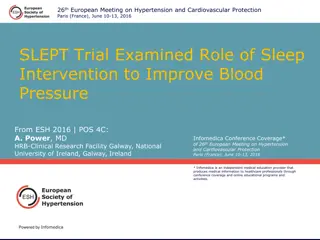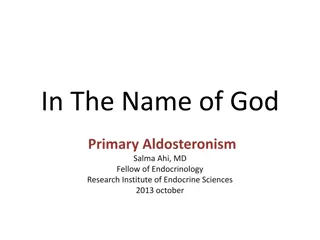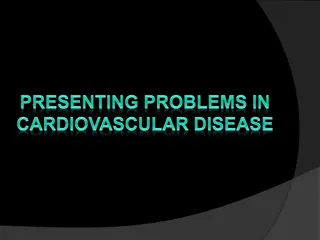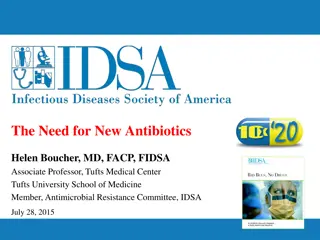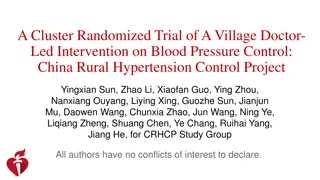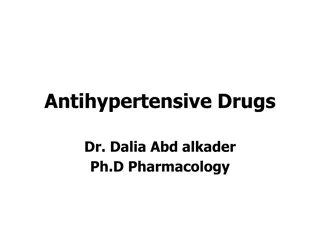Phase 2 Trial of Baxdrostat for Treatment-Resistant Hypertension
Journal club presenting the Phase 2 trial of Baxdrostat, a selective inhibitor of aldosterone synthase, for treatment-resistant hypertension. Evaluating efficacy, safety, study design, inclusion/exclusion criteria, and primary/secondary outcomes. Funded by CinCor Pharma.
Download Presentation

Please find below an Image/Link to download the presentation.
The content on the website is provided AS IS for your information and personal use only. It may not be sold, licensed, or shared on other websites without obtaining consent from the author.If you encounter any issues during the download, it is possible that the publisher has removed the file from their server.
You are allowed to download the files provided on this website for personal or commercial use, subject to the condition that they are used lawfully. All files are the property of their respective owners.
The content on the website is provided AS IS for your information and personal use only. It may not be sold, licensed, or shared on other websites without obtaining consent from the author.
E N D
Presentation Transcript
JOURNAL CLUB PHASE 2 TRIAL OF BAXDROSTAT FOR TREATMENT-RESISTANT HYPERTENSION PRESENTER: MAJ SURBHI SAXENA MODERATOR: COL VISHESH VERMA
PREVIOUS TRIALS PATHWAY PATHWAY- -2 TRIAL 2 TRIAL PRECISION STUDY PRECISION STUDY PHARES STUDY PHARES STUDY
Baxdrostat is a selective inhibitor of aldosterone synthase which reduces aldosterone but not cortisol
AIM To evaluate efficacy and safety of Baxdrostat among patients with treatment resistant hypertension
METHOD Study design : Multi-Center Placebo controlled Randomized Parallel group Double Blinded Dose ranging Phase 2 study Funded by : CinCor Pharma
METHOD Inclusion Criteria : Age 18 years Receiving stable dose of at least three anti-hypertensive medications Mean Systolic blood pressure 130/80 mm of Hg
METHOD Exclusion Criteria Has secondary causes of hypertension Has had a stroke, TIA, ACS, or heart failure within 6 months before screening Has planned or had any coronary revascularization within 6 months before screening Has planned dialysis or kidney transplant Has known hypersensitivity to CIN-107 or drugs of the same class SBP > 180 mmHg, DBP 110 mmHg Estimated GFR <45 ml/min/1.732m2 Uncontrolled Diabetes Has a BMI >45 kg/m2 at screening Has been on night shifts at any time during the 4 weeks before screening
METHOD Secondary Outcome: Change from baseline in the mean seated diastolic blood pressure Primary Outcome: Change in the mean systolic blood pressure from baseline to the end of the 12 weeks treatment in each of Baxdrostat group as compared with placebo group. Safety Outcome : Adverse events, vital sign, result of laboratory tests, electrocardiogram and physical examination
METHOD Adverse Events: Hyperkalemia Hyponatremia Hypotension warranting clinical intervention Hyperglycemia Acute Kidney Injury Dizziness Syncope Urinary Tract Infection
RESULTS EXPLORATORY END POINT
RESULTS EXPLORATORY END POINT
TITLE Is it interesting? YES ABSTRACT Will the conclusions (if valid), likely to be useful to you, in your area of clinical practice or research? YES Whether the settings in the material methods are similar to our own settings? YES
Is there a clear cut / specific research question? YES Was it feasible for the authors to study this question given their technical expertise and available facilities? YES Does the research question have some element of novelty? YES
Have the authors made a mention of Actual / Study Population ? YES Is the method of sampling been described? YES Whether a mention of all the potential confounding factors been made? YES Any selection or information bias could have occurred? Possible
GATE FRAMEWORK OF ASSESSMENT: PECOT PARTICIPANTS: 275 EXPOSURE GROUP: Baxdrostat 0.5 mg (69) Baxdrostat 1.0 mg (69) Baxdrostat 2.0 mg (67) COMPARISON GROUP: Placebo (69) OUTCOME : Reduction in Systolic BP Baxdrostat 0.5 mg (69) : 12.1 1.9 mmHg Baxdrostat 1.0 mg (69) : 17.5 2.0 mmHg Baxdrostat 2.0 mg (67) : 20.3 2.1 mmHg Placebo( 69) : 9.4 mm Hg Duration : 12 weeks T
THE RAMMBO ACRONYM : ASSESSING STUDY BIAS P P Recruitment E Allocation C E C Maintenance O Measurement of outcome T Blind or Objective O T
RAMMBO : Recruitment Study setting & eligibility criteria well described ? Yes Participants representative of eligible ? Yes Randomization process described adequately ? Yes
RA AMMBO: A is for Allocation A is for Allocation 275 Randomization 1:1 ratio for baseline randomization E1-69 C-69 E2-67 E3-69 O T
RAMMBO P Good Maintenance ? Did most participants remain in allocated groups ? Yes Participants &/or investigators blind to exposure (and comparison exposure)? Yes Compliance high & similar in both group? Yes O Completeness of follow-up high & similar in both group? Yes
RAMMBO P Measurement of outcomes blind or objective? EG CG Outcome measurements were Objective Authors reviewed all results O
RAMMBO Recruitment Bias: No bias P Allocation : Adequate E C Maintenance: High Retention Measurement : Right Statistical tools (of outcomes) O T
LIMITATIONS Study was not designed to test the benefits and risks of aldosterone synthase inhibition beyond 12 weeks Study does not compare aldosterone synthase inhibition with alternative antihypertensive agents The selection of patients with an estimated GFR greater than 45 ml per minute reduced the likelihood of hyperkalemia
CONCLUSION Aldosterone synthase inhibition with Baxdrostat led to substantial reductions in systolic and diastolic blood pressure in patients with treatment resistant hypertension
